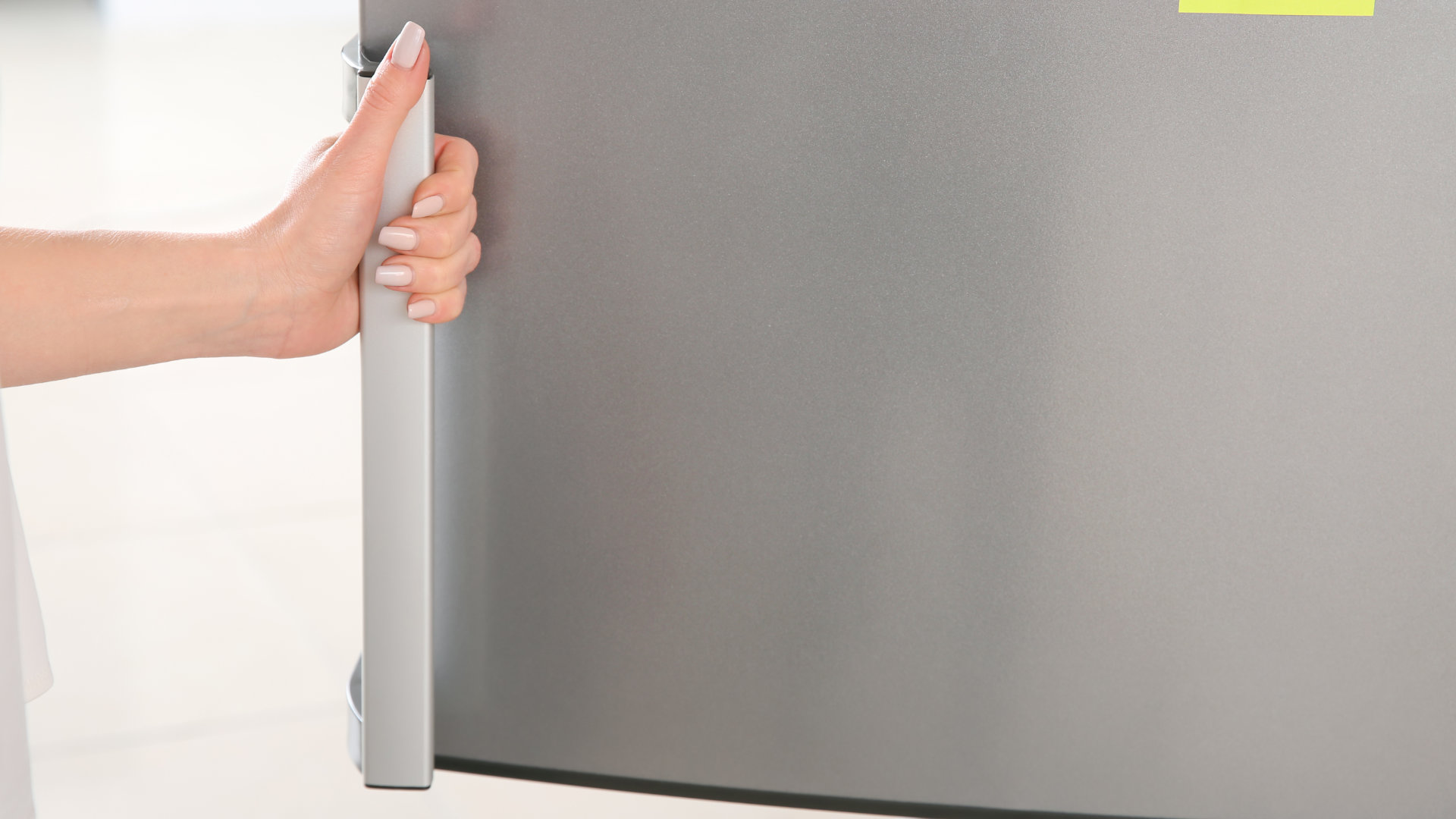
When ice builds up in your freezer, the extra ice stops the freezer from being able to work to its optimal level. It also means you won’t be able to get as much food into your freezer as the ice takes up valuable space.
The good news is that preventing ice from building up is easy to do. In this guide, we will give you some easy-to-follow tips to avoid ice build-ups.
Let’s get started.
Stop humidity getting into your fridge
The first tip is to stop humidity from getting into your fridge and freezer. The easiest way to do this is to avoid opening your freezer door lots of times during the day. This is because every time you open the door warm air gets in and mixes with the cold air to create humidity, which then turns into frost. The same applies to putting warm food into your freezer. Always make sure you let your food cool down before putting it into the freezer.
Make sure the freezer is set at the right temperature
The next tip to stop ice building up in your freezer is to make sure the freezer temperature is set at the correct setting. Your freezer should be set to −18 degrees Fahrenheit. If your freezer is set above this temperature, adjust it. To make sure your temperature thermometer is working correctly, get an external thermometer and check if the temperature reading matches the internal thermometer. If it doesn’t match, you will need to replace the internal thermometer. You should check the temperature about once a month to avoid any problems from developing.
Make sure the door is closed properly
Apart from not opening your freezer door too often, another way to prevent warm air from getting into your freezer unit is to ensure the door seals (sometimes called door gaskets) are airtight. To make sure the door seals are working correctly, you need to open the freezer door and inspect them for any signs of wear and tear. If they’re damaged, they’ll need to be replaced.
If you can see no obvious damage to the seals, place a thin piece of paper between the freezer and the door, then firmly close the door. If you’re able to pull the piece of paper out without any trouble, this indicates the door seal isn’t airtight and will need to be replaced.
Keep your freezer full
Another simple tip to avoid ice building up in your freezer is to ensure that you keep it as full as possible with food and other items that you freeze. This is because when the freezer has more space in it there will be more room for moisture to build up, which turns into frost or ice over time.
Clean your freezer regularly
Another simple tip is to give your freezer a regular clean. This is a pretty obvious way to stop ice from building up but a lot of people forget to regularly clean the freezer and let it defrost. The easiest way to defrost your freezer is to remove all of the food and put it into iceboxes, then turn your freezer off for one hour to let it fully defrost. Follow this by cleaning it thoroughly.
Once the freezer is defrosted and clean, turn it back on and put the food back in. The best time to do this is just before you go on a big shopping trip to the supermarket; you’ll have far less food in the freezer during the cleaning and will be able to fill it up after the shopping trip.
Clean the defrost drain
In the bottom of most fridges is a drain that removes water. If the drain becomes clogged up, ice can develop in your fridge. The easiest way to avoid this happening is to clean it regularly and flush it out with hot soapy water to ensure no loose debris is blocking it. If any debris is blocking the drain, use a piece of wire to remove it.
Clean the condenser coils regularly
At the back of your fridge are a set of coils called condenser coils. Their purpose is to help your fridge operate and cool down. When they become dirty or covered in ice, your fridge won’t operate correctly, which sometimes results in ice building up inside your fridge and freezer. To avoid this problem, unplug your fridge and pull it out from the wall regularly to clean the condenser coils and/or defrost them.

GE Washer Not Spinning? Here’s The Fix!

How to Restore Power to Your GE Dishwasher

How To Reset Your GE Washer Top Loader

Understanding Whirlpool Washer Error Codes

JennAir Ice Maker Not Working? Here’s What to Do

What to Do If Your LG Fridge Isn’t Cooling

Propane vs. Natural Gas Stove: What’s Best?

How Hot Does a Dryer Get?

LG Dryer Flow Sense: Everything You Need to Know

What to Do When Your Freezer Is Not Freezing but the Fridge Is Cold

How to Solve Maytag Dishwasher Showing Error F9E1

When Is a Microwave Unsafe to Use? (Warning Signs to Look For)

How to Fix a Squeaky Dryer (Step-by-Step)

How To Remove Ink From Your Dryer

How To Fix an LG Microwave Not Heating

How To Fix a Maytag Washer Not Spinning

KitchenAid Refrigerator Not Making Ice? Here’s Why

Whirlpool Microwave Door Error: How to Fix It

13 Things to Never Put in the Dishwasher


